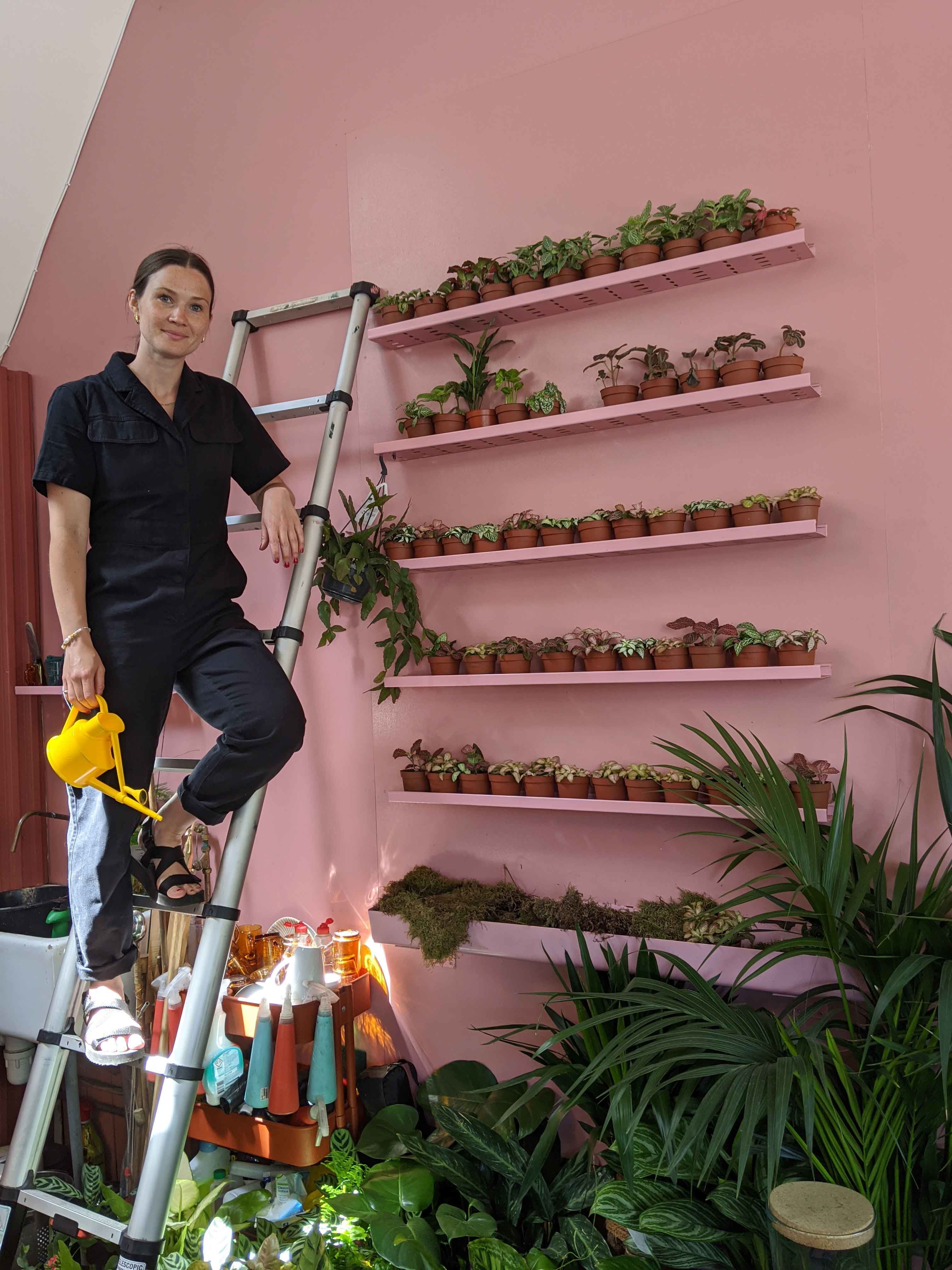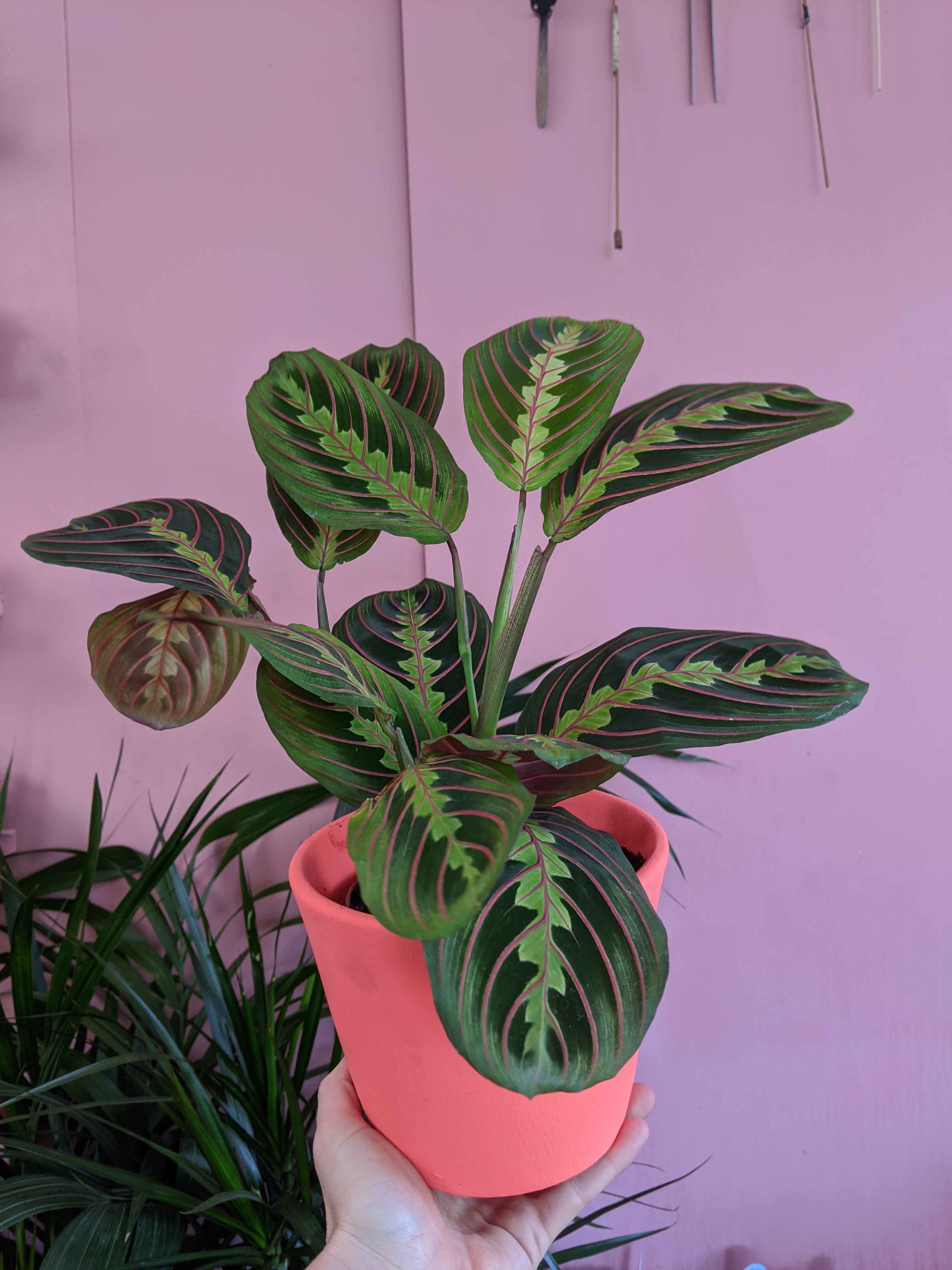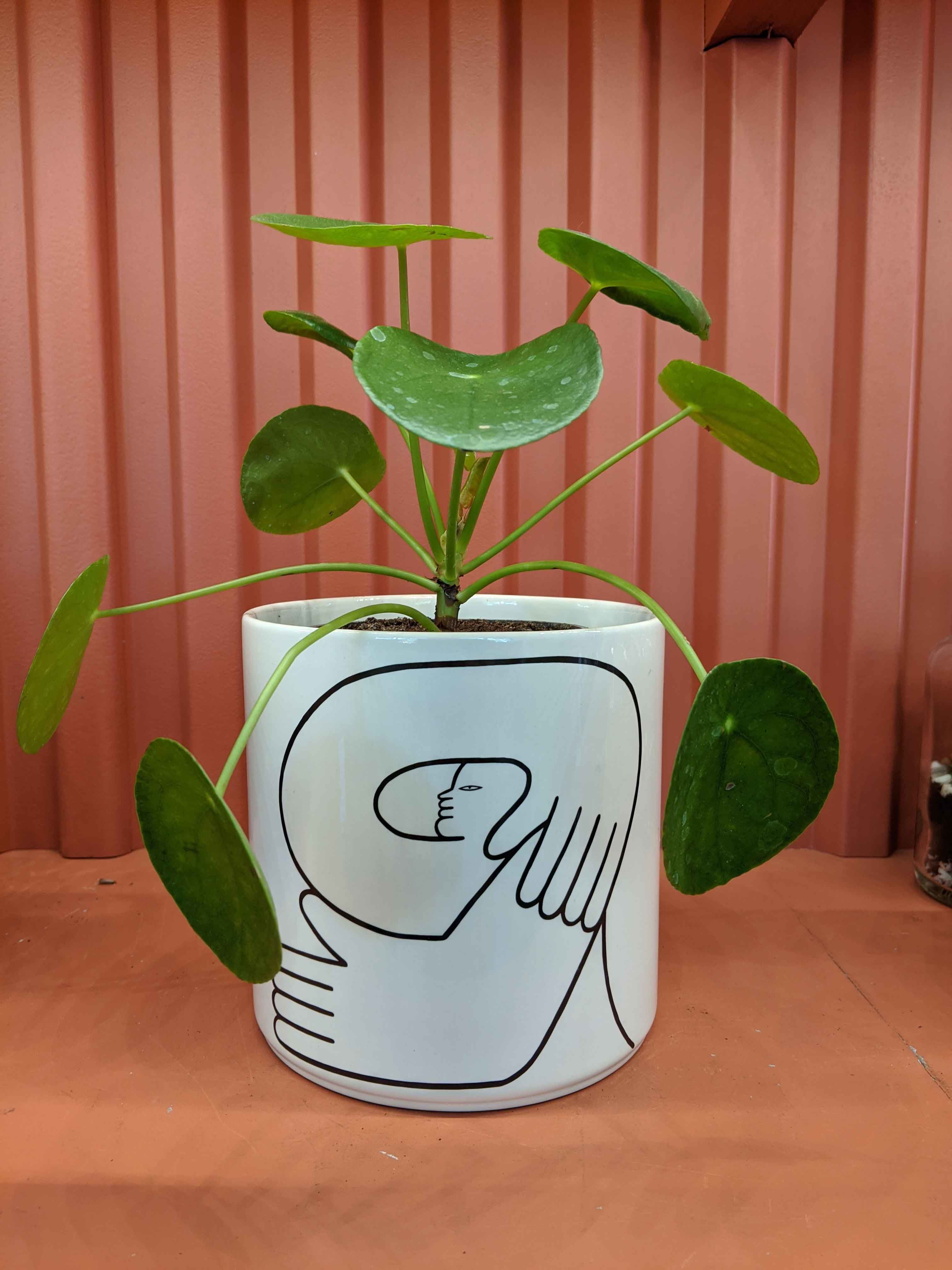Meet Emma Sibley, plant expert, author and founder of London Terrariums
With our houseplant obsession growing by the day (pun intended), we caught up with Emma to find out which plants are best for small spaces. Plus, we get Emma’s top tips on how to repot them, where to keep them and everything you need to know to ensure your new green roommates not only survive, but thrive!
@londonterrariums
https://londonterrariums.com/
Plants For Small Spaces With London Terrariums



Maranta / Prayer Plant
The appeal of the Maranta plant is their beautiful leaves which almost look like they’ve been hand-painted, making it one showstopper of a houseplant to choose. Also known as the Prayer Plant, the Maranta’s striking leaves also rise during sunlight hours, before folding and bowing down at night.
Temperature
It’s important to keep your Maranta plant away from cold draughts as they appreciate a comfortable room temperature, they don’t like any sudden changes!
Light
The bright red shades of the Maranta can fade if they are left in direct sunlight, so place in a warm but shady spot during the summer and only move near a window or place on a windowsill in the cooler winter months.
Water
Keep your plant’s compost damp by watering once a week, but be careful not to overwater - especially during the winter when you should keep watering to a minimum.
The appeal of the Maranta plant is their beautiful leaves which almost look like they’ve been hand-painted, making it one showstopper of a houseplant to choose. Also known as the Prayer Plant, the Maranta’s striking leaves also rise during sunlight hours, before folding and bowing down at night.
Temperature
It’s important to keep your Maranta plant away from cold draughts as they appreciate a comfortable room temperature, they don’t like any sudden changes!
Light
The bright red shades of the Maranta can fade if they are left in direct sunlight, so place in a warm but shady spot during the summer and only move near a window or place on a windowsill in the cooler winter months.
Water
Keep your plant’s compost damp by watering once a week, but be careful not to overwater - especially during the winter when you should keep watering to a minimum.

Pilea Pepperomia / Chinese Money Plant
With it’s signature round and flat little leaves, it’s easy to see why this plant is also nicknamed the ‘pancake plant’. Growing only to around 30cm in height, Pilea Pepperomia are sun worshippers and you may notice that more mature plants will curl their woody stems around in order to reach and bathe in as much sunlight as possible.
Light
As much as these little beauties love the sun, leaving them in direct sunlight can damage their leaves. They enjoy being outside in a shady spot during warm summer months and grow well on a windowsill away from direct sunlight during the winter. During cooler months you may also be lucky enough to witness the bloom of small white flowers.
Water
Relatively easy to care for, pancake plants are happiest in free draining soil and need watering once a week when the soil has completely dried out, and may need watering more frequently during hot summer months.
Propagation
The Pilea can be completely self propagating and from a young age will start to produce offshoots or ‘pups’ at the base of the stem. These will happily grow for a while, but as these babies get bigger they will need to be replanted into their own pots. You can also propagate your own Pilea plant from a cutting, simply place a long stem in a cup of water and watch as strong roots form in a matter of days, making them great gifts to pass on to your friends!
With it’s signature round and flat little leaves, it’s easy to see why this plant is also nicknamed the ‘pancake plant’. Growing only to around 30cm in height, Pilea Pepperomia are sun worshippers and you may notice that more mature plants will curl their woody stems around in order to reach and bathe in as much sunlight as possible.
Light
As much as these little beauties love the sun, leaving them in direct sunlight can damage their leaves. They enjoy being outside in a shady spot during warm summer months and grow well on a windowsill away from direct sunlight during the winter. During cooler months you may also be lucky enough to witness the bloom of small white flowers.
Water
Relatively easy to care for, pancake plants are happiest in free draining soil and need watering once a week when the soil has completely dried out, and may need watering more frequently during hot summer months.
Propagation
The Pilea can be completely self propagating and from a young age will start to produce offshoots or ‘pups’ at the base of the stem. These will happily grow for a while, but as these babies get bigger they will need to be replanted into their own pots. You can also propagate your own Pilea plant from a cutting, simply place a long stem in a cup of water and watch as strong roots form in a matter of days, making them great gifts to pass on to your friends!
Cacti and Succulents
Cacti and succulents have been at the forefront of the horticultural scene for a long time, but it’s only in the past few years that they’ve become increasingly popular with the modern urban gardener and green-fingered city dweller. Desert plants crave sunlight, so pop them in a south-facing window, and keep away from humidity - succulents don’t do well in bathrooms. They hate getting their leaves wet as this can cause them to rot, so water them at root level by placing the pot in a saucer of water so that the compost can take up as much water as needed.
Cacti and succulents have been at the forefront of the horticultural scene for a long time, but it’s only in the past few years that they’ve become increasingly popular with the modern urban gardener and green-fingered city dweller. Desert plants crave sunlight, so pop them in a south-facing window, and keep away from humidity - succulents don’t do well in bathrooms. They hate getting their leaves wet as this can cause them to rot, so water them at root level by placing the pot in a saucer of water so that the compost can take up as much water as needed.
Closed Terrarium
A closed terrarium is a self-sustaining ecosystem. They are a Victorian invention that kick-started a demand for tropical plants across the globe, so it’s thanks to terrariums that we have exotic plants in our homes today! The great thing about terrariums is that the glass protects the plants from any dust or pollution, keeping your plants in a humid environment so no need to water - it is its own little self-sufficient ecosystem!
A closed terrarium is a self-sustaining ecosystem. They are a Victorian invention that kick-started a demand for tropical plants across the globe, so it’s thanks to terrariums that we have exotic plants in our homes today! The great thing about terrariums is that the glass protects the plants from any dust or pollution, keeping your plants in a humid environment so no need to water - it is its own little self-sufficient ecosystem!
Repotting
If you’re repotting your houseplants, spring is the ideal time. Plants are hitting their peak growing season, so it's a great idea to repot before they get too big.
Not sure whether they need repotting? Check the roots. If they’re poking out of the bottom of the drain holes or trying to escape out the top - it’s time for a bigger pot. Choose a pot that’s only slightly larger than the original, if it’s too big the plant can go into shock and die.
Use a rich houseplant or potting compost and finish with a good water to bed the plant in its new home.
If you’re repotting your houseplants, spring is the ideal time. Plants are hitting their peak growing season, so it's a great idea to repot before they get too big.
Not sure whether they need repotting? Check the roots. If they’re poking out of the bottom of the drain holes or trying to escape out the top - it’s time for a bigger pot. Choose a pot that’s only slightly larger than the original, if it’s too big the plant can go into shock and die.
Use a rich houseplant or potting compost and finish with a good water to bed the plant in its new home.